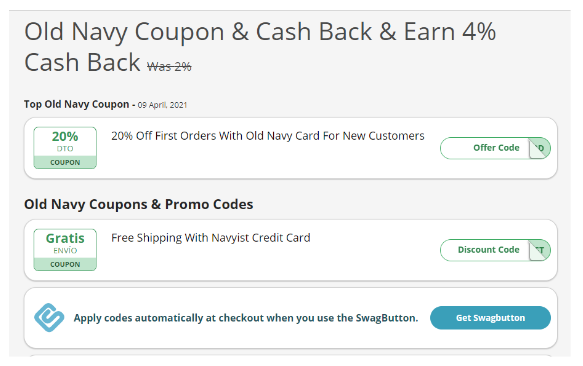Many companies have increased their focus on customer retention marketing — and for a good reason. Not only are repeat customers more loyal to brands, but they’re also more likely to convert than first-time shoppers.
So, if you’re looking to increase sales, start by selling to your loyal fans first. It’ll cost you less money, and you’ll have higher conversion rates. Isn’t that every business’s dream?
1. Focus on employee engagement and retention
It’s no secret that happy employees make happy customers. When employees have positive attitudes toward their work, that attitude carries over into their customer relationships. That’s why it’s essential to prioritize employee engagement and employee retention.
Retaining happy employees naturally leads to higher customer retention. Happy employees who are engaged and committed to your company long-term are more equipped for building long-term relationships with customers.
On the flip side, unhappy and disengaged employees create poor customer experiences and can even sabotage your business. They won’t take care of your customers well, and they won’t be able to drive your business forward.
In the end, the face of your business is your employees. The higher employee engagement and retention is, the higher customer engagement and retention is.
2. Solve customer pain points like nobody else
Solving customer pain points better than other companies is one of the best ways to lower your customer churn rate.
Do your customers hate waiting for packages? Switch shipping carriers or do whatever you can to speed up your shipping time. Are your customers having a hard time getting proper support? Increase your support options and/or extend your support hours.
Use visual communication to make complex information easier for customers to understand and process. This will help address their pain points faster and more efficiently.
Here are some other ways to solve customer pain points:
- Use listening software to keep an eye on negative comments and reviews. Be sure to respond to every negative comment with empathy, kindness, and solutions.
- Listen to customers when they’re struggling and use their feedback to improve your products and services.
- Create a consistent and reliable customer experience across touchpoints (i.e., reduce friction during the buying experience).
- Be faster, kinder, and better. Have better quality products, answer questions quicker, be convenient, and tailor your offers and solutions to meet customer needs.
- Use SEO-optimized content. SEO-optimized content will help your customers find solutions to their problems in no time and with ease. It will also help you build valuable backlinks for your brand.
3. Make it easier for customers to buy
Want customers to stick around? Increase their customer purchasing power. Here are three ways to do that:
- Special offers
Enticing customers with special offers like discounts, coupons, and cashback, can be a great way to increase their purchasing power. After all, why would they want to pay full price for something when they can get a 20% discount instead?
- Discount programs
Piggybacking on special offers and creating discount programs like a VIP program or a rewards program encourages customers to make purchases more often. For instance, Old Navy has created a discount program with a company called Swagbucks to offer old navy coupons and even cash back to their customers. They also give out $10 gift certificates just for signing up.

Image via Swagbucks
Discount coupons and promotional offers can be added to product packaging as loyalty rewards. Businesses can create QR codes for these coupons to effectively funnel loyal customers from offline promotions, and capture customer behavior data for targeted promotions.
- Provide tiered packages
Giving clients the option to choose between a variety of packages puts purchasing power back in the customer’s hands. Presenting three different packages with each subsequent package offering incrementally more value is a great way to appeal to different target clients.
For instance, if you sell skincare sets, you can offer a basic set, a premium set, and a luxury set. Or if you’re an online SaaS company, you can offer a free version, a midgrade paid version, and an upscale paid version. Here’s an example from Reply’s Linkedin email finder packages:

Image via Reply
You can also show customers how your packages compare like Wheelhouse is doing to other companies and why yours are better. Not only does this save them time researching, but it also gives you a competitive edge.
Chatbots provide support to your business even outside the time-zone, therefore, to increase customer retention chatbots are the best way out.
4. Increase customer engagement
Finding creative ways to stay engaged with your customers — like creating a podcast using a leading podcast hosting platform or leveraging various social media channels — helps you connect to your customers in a profound way.
When customers know who you are, what you represent, and have a deep connection with your brand, they’ll be thrilled to keep buying from you. Here are some ways to foster engagement with your customers:
- Start a conversation
Get to know how your customers think by starting a conversation with them on Instagram or Facebook. Do you sell financial services? Post a few questions to get an idea of how they handle money — I.e., ‘what’s your relationship with investing?’ Are you looking to support social issues? Ask your customers what causes are dear to their hearts.
- Respond to comments
Instead of starting a conversation and walking away, make sure to respond to as many comments as possible on your social media channels. Ask and answer questions, give praise, and make sure to address negative comments as well. The key to responding to comments? Act like a real person. Be compassionate, kind, and solution-oriented — no cookie-cutter or thoughtless responses.
- Leverage calls to action (CTAs)
One of the best ways to increase engagement and sales is to be direct about what you want your customers and prospects to do. Did you send out an email newsletter about your latest e-book? Encourage readers to download a copy. Did you publish a blog post about a new upgrade? Ask readers to upgrade their product or service. Even a simple ‘download your copy here’ or ‘upgrade your service today’ are effective ways to encourage customers to take action.
- Take advantage of stories
Customers love scrolling and interacting with Instagram and Facebook Stories. Encourage interaction by adding a poll, slider, and question stickers to your Instagram stories and share them with your Facebook Stories.

Image via GettingGrowth
- Engage through personalized videos
Companies are more likely to make a sale from an existing customer than from a new one. Around 70% to 80% of consumers make a decision to purchase after watching a brand’s video. Using that same method, but more personalized, can help make them stay.
Creating a personalized video can be time-intensive but you don’t have to spend valuable resources on it over and over again since it can be done in an online video editor. Small businesses can use personalized videos to thank customers for buying their product or to give customers a heads up that a new collection is coming out soon.
Sending videos through emails or DMs makes customers feel valued and when they are, they will feel more motivated to keep supporting your product.
5. Create an effective quality management system
Having a good quality management system (QMS) in place ensures that your customers will continue to receive quality products and services — one of the biggest factors that keep customers coming back.
A QMS includes written and controlled guidelines that all procedures must follow. When done well, a good QMS should result in long-term financial gains, a reduction in costly errors, and consistently high-quality products.
An efficient QMS requires:
- A quality manual that explains the scope, guidelines, and checklists.
- A quality policy with quality objectives.
- Policies around effective planning, operations, monitoring, and controls.
- Work instructions, responsibilities, and checkpoints.
- Forms for employees and quality control managers to fill out.
If you’re not sure where to start, here’s a quick summary:
- Map out your processes, policies, objectives, and forms.
- Create quality policies and a quality manual.
- Create work instructions, responsibilities, and checkpoints.
- Develop trackable metrics and measurements.
- Track your QMS efforts and course-correct when needed.
- Invest in necessary tools.
- Hire or create a high-performing QMS team.
- Ask customers what they think and adjust if needed.
If you’re not interested in mapping out your QMS process yourself, consider hiring a QMS expert to do the legwork for you.
6. Teach your customers how to succeed
How can your product/service help a customer succeed? Can it save them time or money? Can it help them make money? Can it help them solve a problem? Show them how by recording videos, podcasts, and webinars or writing blogs and social media posts.
For instance, a comprehensive guide to business email could bring them into the 21st century. Another example is this blog post by Preply, an online language learning platform, about how to advertise yourself as a tutor:

Image via Preply
By providing tutors with the necessary tools to succeed, Preply’s tutors are more likely to keep using the platform.
You can also highlight customer experiences or share customer success stories. Social proof is highly influential these days. When you share customer success stories with your customers, you show other customers that they have the ability to succeed too.
So, whether it’s providing your customers with an entire collection of articles in welcome emails or showing up on live videos to do product demonstrations, teaching your customers how to succeed is one of the best ways to keep them around.
7. Make it easy for customers to contact you
One of the quickest ways to lose customers is by making it difficult for them to get a hold of you. Customers want to know that if they have a problem, they can reach you easily and get a solution quickly.
For instance, PandaDoc, a document signing software company, makes it easy for customers to get support with a 24/7 chatbot:

Image via PandaDoc
And Nlyte, a data center monitoring company, gives customers easy access to its support team with three buttons on a page — one that says ‘support’, one that says ‘speak with an expert,’ and a chatbot button labeled ‘how can we help?’

Image via Nlyte
Key takeaway: Provide as many support options as possible. Respond quickly and kindly. Create optimized content for the purpose of providing support. And always find a solution to customers’ problems. Use chatbots to enhance customer experience.
8. Ask for feedback and use it to improve
To really understand how to retain customers, you need to go straight to the source. That’s where customer feedback comes into play. To keep up with customers’ changing demands, it’s crucial to implement a feedback system like sending monthly surveys or posting weekly polls, for example.
You can also ask customers if they’d be willing to jump on a video call to discuss their feedback in depth. Whatever you do, make sure asking for feedback is part of your business strategy. But, listening to feedback isn’t enough to retain customers. Here are some questions to think about:
- Are they frustrated with product quality lately?
- Are they feeling underrepresented in your marketing tactics?
- Can you cater your marketing to a variety of ethnicities, backgrounds, and genders?
Customer feedback gives you the opportunity to explore customer pain points, improve your products and services, and connect with your customers.
This is a Contributor Post. Opinions expressed here are opinions of the Contributor. Influencive does not endorse or review brands mentioned; does not and cannot investigate relationships with brands, products, and people mentioned and is up to the Contributor to disclose. Contributors, amongst other accounts and articles may be professional fee-based.

